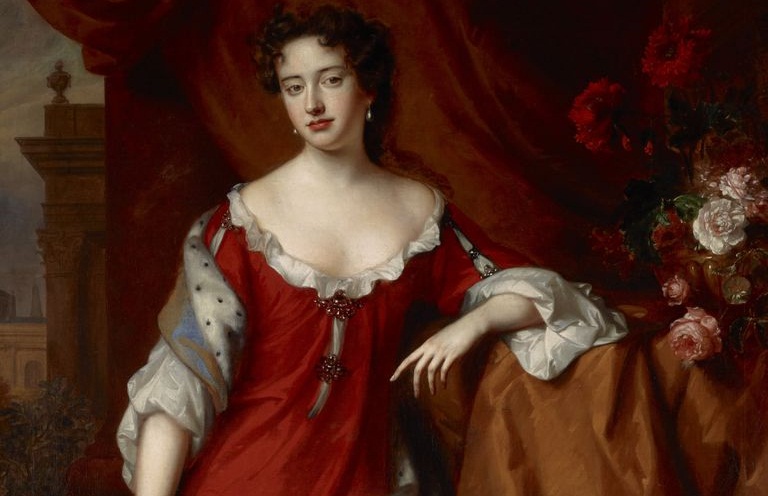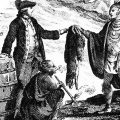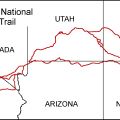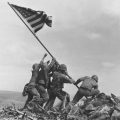Beginning with Christopher Columbus in the late fifteenth century, it was a common practice for European explorers and colonists to bring Native peoples back to Europe to meet with European royalty. During the first half of the eighteenth century there were several groups of American Indians who visited with European royalty.
Mohawks and Mahican:
In 1710, England was visited by a formal Indian delegation composed of three Mohawks and one Mahican. The delegation was called the “Four Kings” and had been assembled by New England colonists who wanted to persuade Queen Anne to support the colonial plans for an invasion of New France.

In London, the Four Kings enjoyed all of the activities and festivities which would normally be bestowed on foreign dignitaries. The visit helped to cement a strong friendship between England and the Iroquois Confederacy, of which the Mohawk were a part.
In their meeting with the Queen, the Four Kings asked for her assistance. Historian Herman Viola, in his book Diplomats in Buckskins, reports: “The chiefs, obviously well coached by their patrons, told Queen Anne that the capture of Canada would bring England important economic benefits, for the Mohawks would then be able to conduct ‘a great Trade with Our Great Queen’s children.”
They also asked for Christian missionaries and presented the Queen with several belts of wampum.
Otoe, Osage, Missouri, Illinois, Chicagou, and Methegamias:
In 1725, a group of Indians, including one Otoe, one Osage, one Missouri chief, one Missouri young woman, one Illinois, one Chicagou, and one Metchegamias, were sent to Paris, France. There they met with the Director of the Company of the Indies, and the Duke and Duchess de Bourbon. The chiefs were given a complete French outfit which included a blue dress coat, silver ornaments, and a plumed hat trimmed in silver. They were presented to King Louis XV and they performed a dance at the opera. The French King gave each of the chiefs a royal medallion, a rifle, a sword, and a watch.
Cherokee:
In 1730, the English Crown sent seven Cherokee chiefs – Attakullakulla, Ookounaka, Ketagusta, Tathtiowie, Clogittah, Collanah, and Ounakannowie– on an educational trip to England, which concluded with a treaty. According to Cherokee historian Robert Conley, in his book The Cherokee Nation: A History: “They were wined and dined at fashionable spots in London, had their portraits painted, and were followed around town by curious crowds.”
Under the treaty, the Cherokee were to fight for the British; they were to keep the trading path clean; they were to return runaway slaves; and they were to give up any Indian who killed an Englishman.
According to popular reports on their visit with the King, Ookounaka was supposed to have said: “We look upon the Great King George as the Sun, and as our father, and upon ourselves as his children. For though we are red, and you are white yet our hands and hearts are joined together”
However, as Robert Conley has pointed out, the Cherokee saw the Sun not as male, but as female and thus it would have been highly unlikely of any Cherokee to make this statement. Secondly, the idea of categorizing people according to perceived skin color was totally alien to the Cherokee, thus invalidating the accuracy of the second part of the quote.
Yamacraw:
In 1734, several Yamacraw from Georgia, including Tomochichi and his wife Senauki, traveled to England. According to historian Nancy Shoemaker, in her book A Strange Likeness: Becoming Red and White in Eighteenth-Century North America: “The highlight of their trip was a meeting with King George II, who held court from his throne, promised friendship between their peoples, and offered the Indian delegation use of one of his carriages so as not to be outdone by Queen Anne’s royal treatment of the ‘four Indian kings’ two decades earlier.”
Senouki, who was the only woman in the group, wore conventional English clothing instead of Native clothing. This included a tightly laced jacket and a long petticoat, both of solid pink. Her hair, however, was kept in Native fashion rather than English. In a similar fashion, Toonahowi, Tomochichi’s nephew and heir, dressed more like a young, wealthy squire than an Indian leader. According to historian Julie Anne Sweet, in an article published in The Georgia Historical Quarterly: “Through their clothing choices, Senauki and Toonahowi demonstrated their knowledge of the customary English traditions and their willingness to adapt to the present circumstances to further their overall objectives.”
In his negotiations with the English, Tomochichi explained how the English traders had cheated the Indians through price gouging and asked for fairness in trade. It was clear that the Indians were aware that the English traders in South Carolina were cheating them.
Mohegan:
In 1735, Mahomet traveled to England where he identified himself to the King as the chief sachem of the Mohegan in Connecticut. He asked the King for protection against the injuries and wrongs which the English colonists had committed against his people. Although Mahomet died in England, the king created a commission to look into the situation.




Leave a Reply